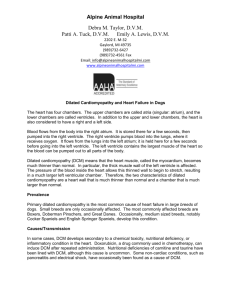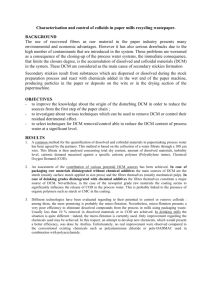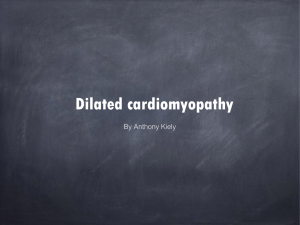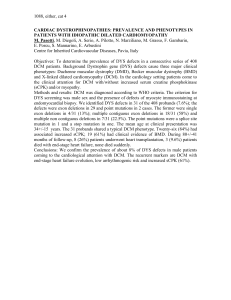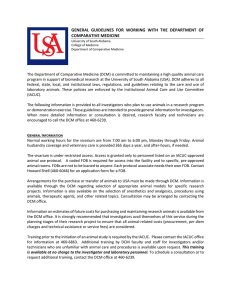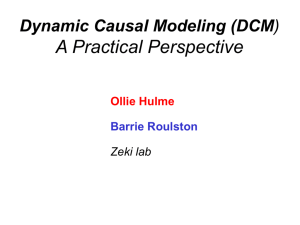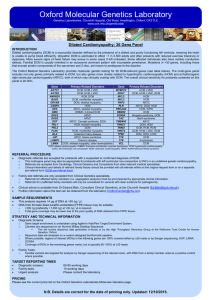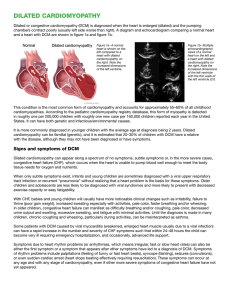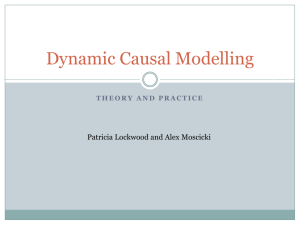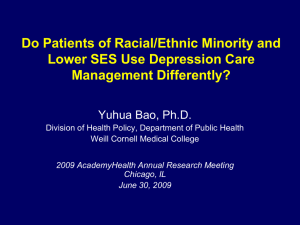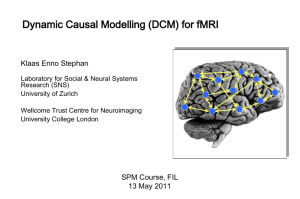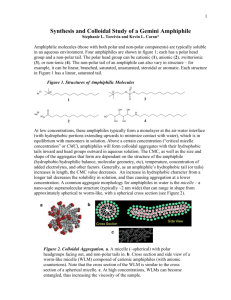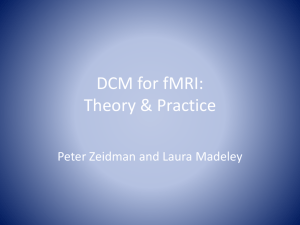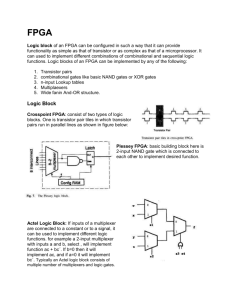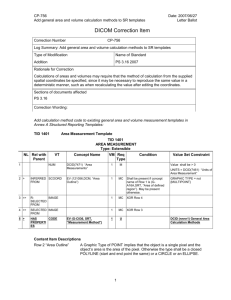Dilated Cardiomyopathy (DCM)
advertisement
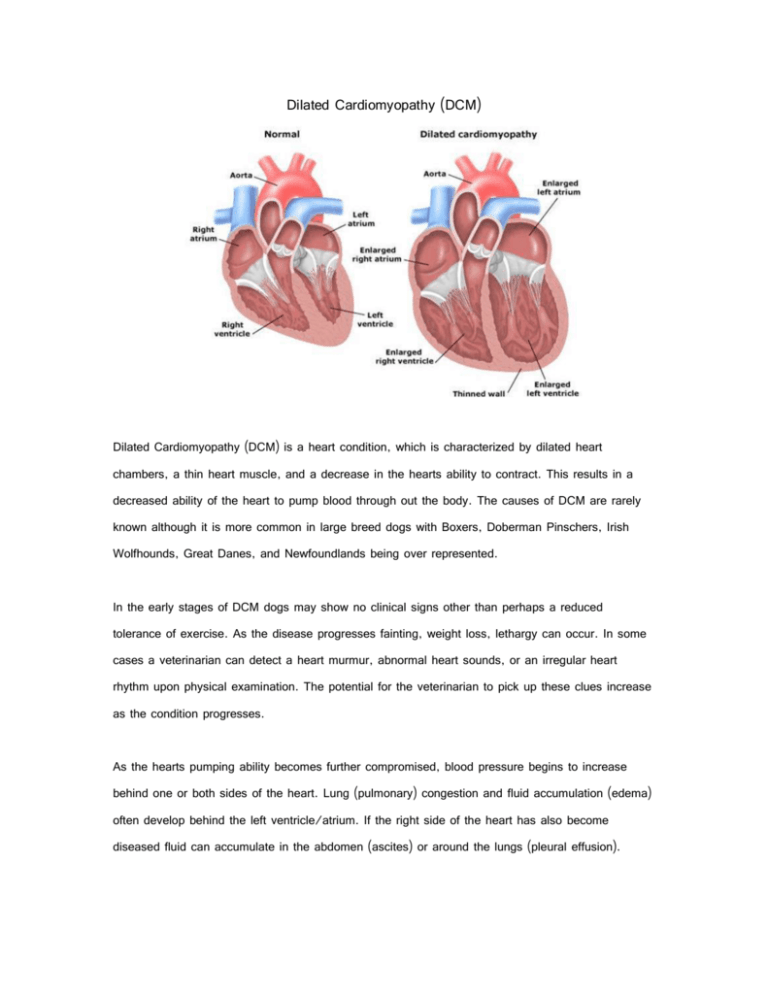
Dilated Cardiomyopathy (DCM) Dilated Cardiomyopathy (DCM) is a heart condition, which is characterized by dilated heart chambers, a thin heart muscle, and a decrease in the hearts ability to contract. This results in a decreased ability of the heart to pump blood through out the body. The causes of DCM are rarely known although it is more common in large breed dogs with Boxers, Doberman Pinschers, Irish Wolfhounds, Great Danes, and Newfoundlands being over represented. In the early stages of DCM dogs may show no clinical signs other than perhaps a reduced tolerance of exercise. As the disease progresses fainting, weight loss, lethargy can occur. In some cases a veterinarian can detect a heart murmur, abnormal heart sounds, or an irregular heart rhythm upon physical examination. The potential for the veterinarian to pick up these clues increase as the condition progresses. As the hearts pumping ability becomes further compromised, blood pressure begins to increase behind one or both sides of the heart. Lung (pulmonary) congestion and fluid accumulation (edema) often develop behind the left ventricle/atrium. If the right side of the heart has also become diseased fluid can accumulate in the abdomen (ascites) or around the lungs (pleural effusion). These conditions are classified as heart failure weakness, fainting episodes, and unfortunately even sudden death can result from heart rhythm disturbances even if no previous signs have occurred. Dogs with heart failure often show signs of left sided congestive heart failure such as reduced ability to exercise, tiring quickly, an increase in breathing rate and effort, excessive panting, and cough which often seems soft almost like the dog is clearing its throat. Often the heart decreased pumping ability and irregular rhythms can cause episodes of weakness or fainting. More advanced signs of heart failure can include labored breathing, reluctance to lie down, inability to rest comfortably, worsened cough, reduced activity, loss of appetite, and collapse. If any of these signs occur it is very important to contact a veterinarian right away. Cardiomyopathy is diagnosed with a combination of many factors the first being a cardiac exam which consists of your veterinarian listening for abnormal sounds with a stethoscope. Chest x-rays can also be helpful in diagnosing this condition by helping to show any enlargement of the heart as well as any evidence of fluid in the lungs. An ECG (electrocardiogram) can also be beneficial in seeing any irregular heart rhythms. Echocardiograms (ultrasounds of the heart) can also be performed at some specialty clinics and can often be the earliest detection of DCM. Clinical signs of heart failure such as those described above are also beneficial in the diagnosis of this condition. Currently there is no cure for DCM and treatment is aimed at controlling the symptoms and delaying the onset of heart failure. In early diagnosis dogs can be placed on ACE inhibitors such as enalapril to slow the progression of changes to the heart. Dogs who present to a veterinarian in heart failure are treated with oxygen therapy and diuretics such as furosemide to decrease fluid accumulation in the lungs. Dogs who improve during this treatment can often be sent home on a combination of medications such as furosemide (Lasix), enalapril, Digoxin or Beta blockers which can be used to help control arrhythmias. Sometimes nutritional supplements are also given such as Taurine, LCarnitine, and Coenzyme Q-10 are used although the effects of these on canine DCM have not been proven. Unfortunately since DCM is not reversible and heart failure is progressive, the intensity of therapy usually must increase over time. This may mean an increase in medications or frequency of use for current medications. Long term prognosis for survival is poor but dogs can live months to years if initial therapy has a good response.
